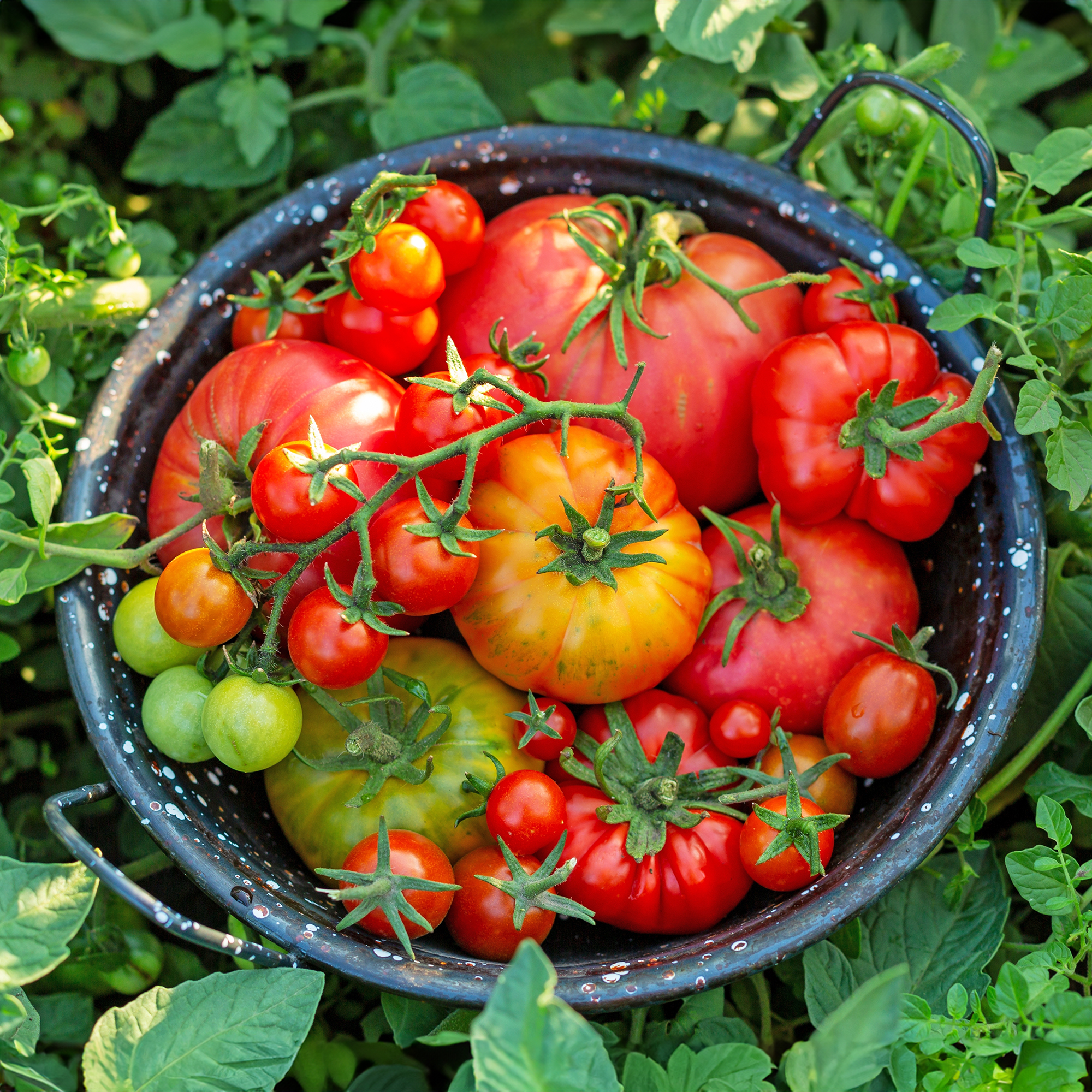Types Of Tomatoes Explained: Explore The Many Wonderful Shapes, Colors, Flavors, & Best Uses
The world of tomato varieties is vast and fascinating. Learn about the key types to grow in your garden, tailored to your preferences and space.
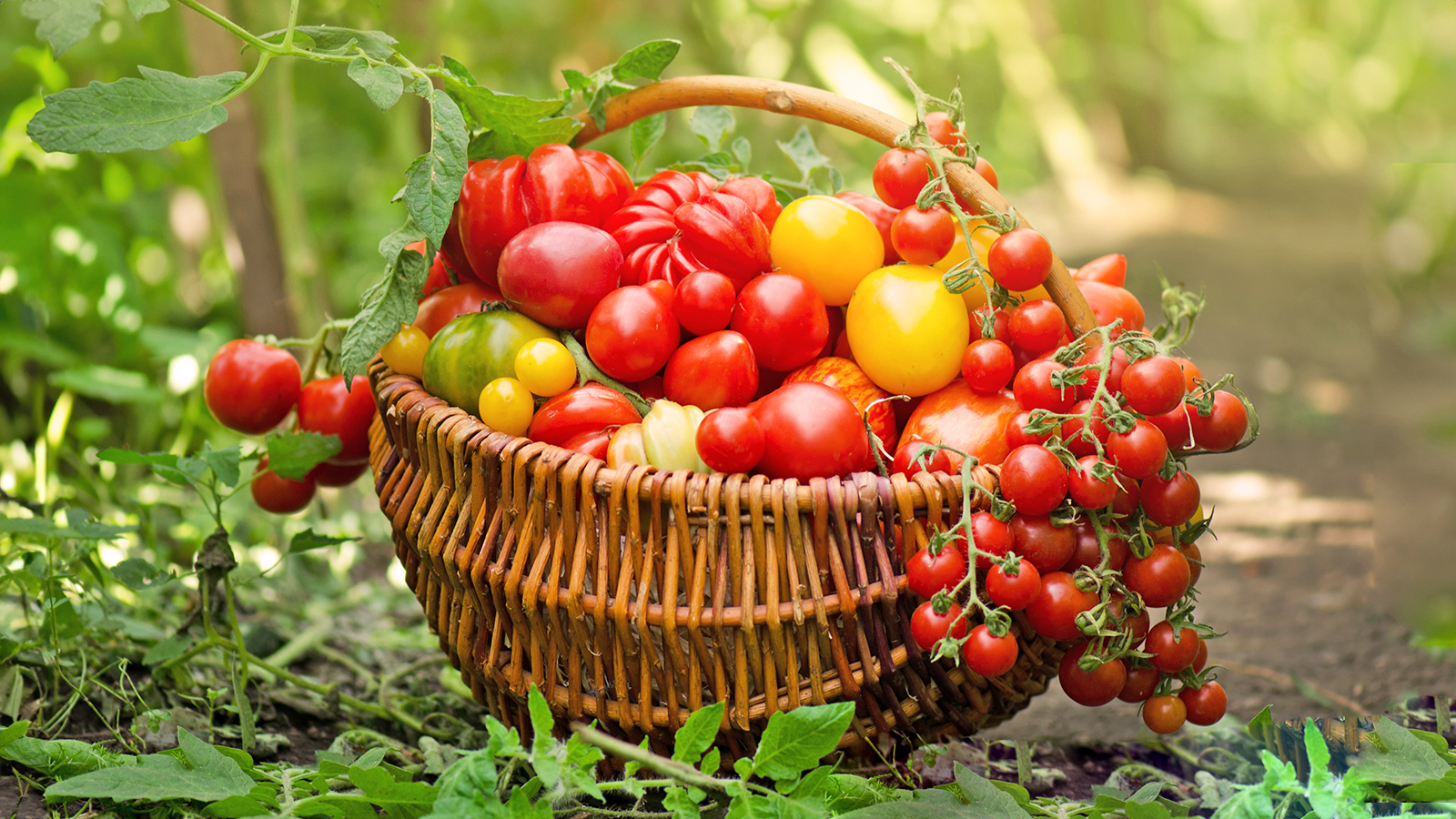

Melanie Griffiths
With so many different types of tomatoes to choose from, gardeners are spoiled for choice. But how do you know which varieties are best to grow? There are broad categories that divide all tomatoes, such as whether they are determinate or indeterminate, and organic or hybrid. But within each group, there is a huge range of fruit shapes, sizes, flavors, and colors to be found, as well as different plant sizes and harvest times.
If you're learning how to grow tomatoes, is it because you want them for slicing, canning, making into sauces, or just to pop into your mouth fresh from the plant? Do you live in an area with a short growing season better suited to early tomatoes, or do you need the best tomatoes for hot climates? Are you looking for a traditional red tomato, or would you like to try something new that produces a black or even a green striped fruit? Do you have unlimited space, or are you in need of a compact variety suitable for growing tomatoes indoors?
There are so many factors to consider when choosing the types of tomato plants to grow. Whether you're a beginner seeking the easiest tomatoes to grow or an experienced grower looking for the next step, this guide will help you choose the best options for your needs.
Determinate or Indeterminate?
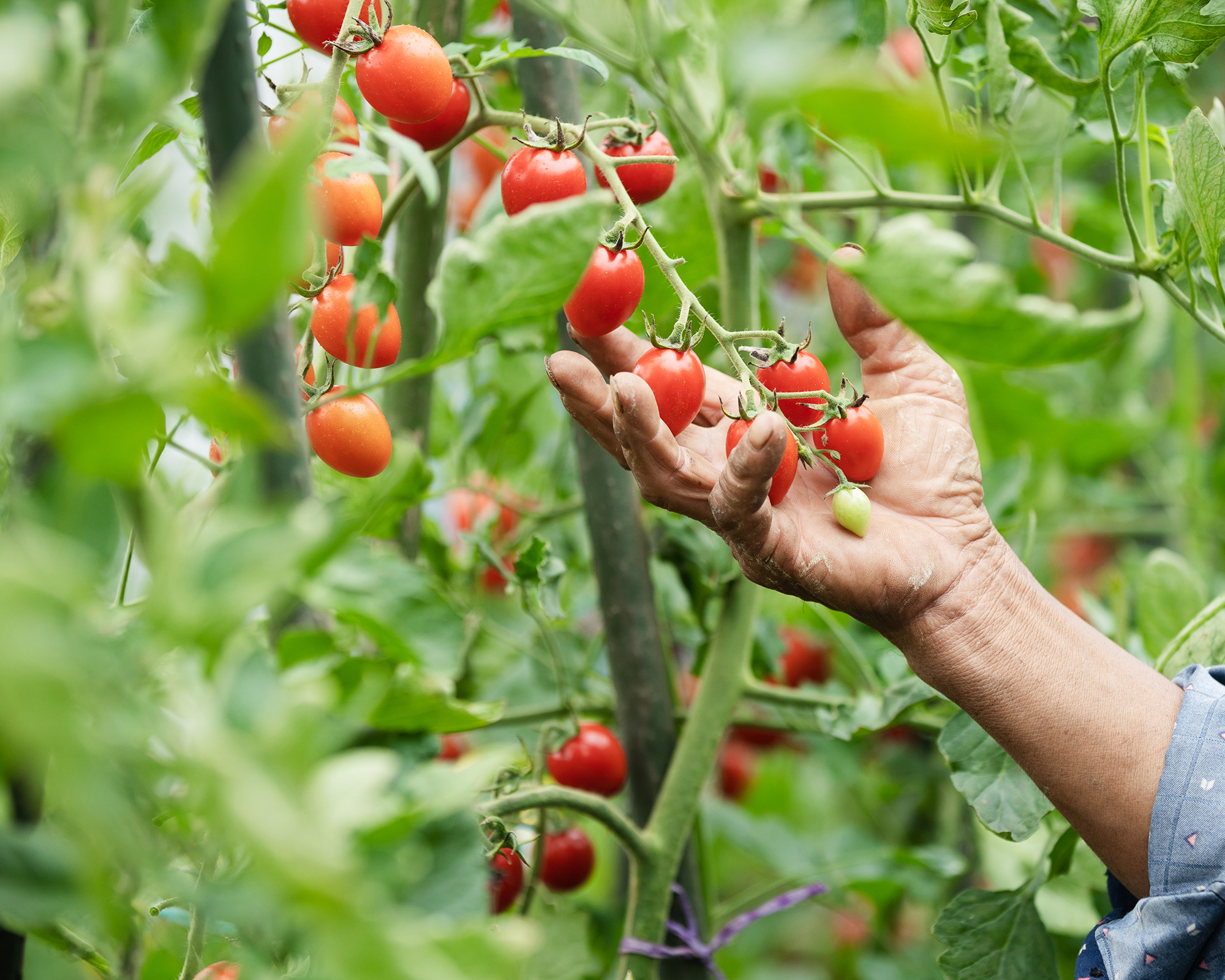
Depending on their growth habit, all tomatoes may be categorized as either determinate or indeterminate tomatoes. Each type has its own advantages, so consider your space and how you want to use your tomatoes.
Determinate tomatoes are also called bush tomatoes. They have a compact, bushy growth habit and rarely reach heights above 3-4 feet (1-1.2m). This makes them ideal for growing tomatoes in containers and small spaces. Crucially, the tomatoes ripen all at a similar time, over a couple of weeks. Rather than fruiting continually throughout the season, they produce their crop all in one glut, which makes them well-suited to canning and saucing, as well as short growing seasons.
Indeterminate tomatoes – also known as vining or cordon tomatoes – are vigorous growers and can get to 6-20 feet (2-6m) in height, although they are usually pruned to maintain a manageable size. They need support, such as from a tomato cage, and a bit more space than determinate plants. Fruit from indeterminate varieties can be harvested continuously throughout the growing season, often up until the first hard frost. If you want to harvest a few tomatoes every few days for slicing and snacking, then this is the best option.
Heirloom Tomatoes
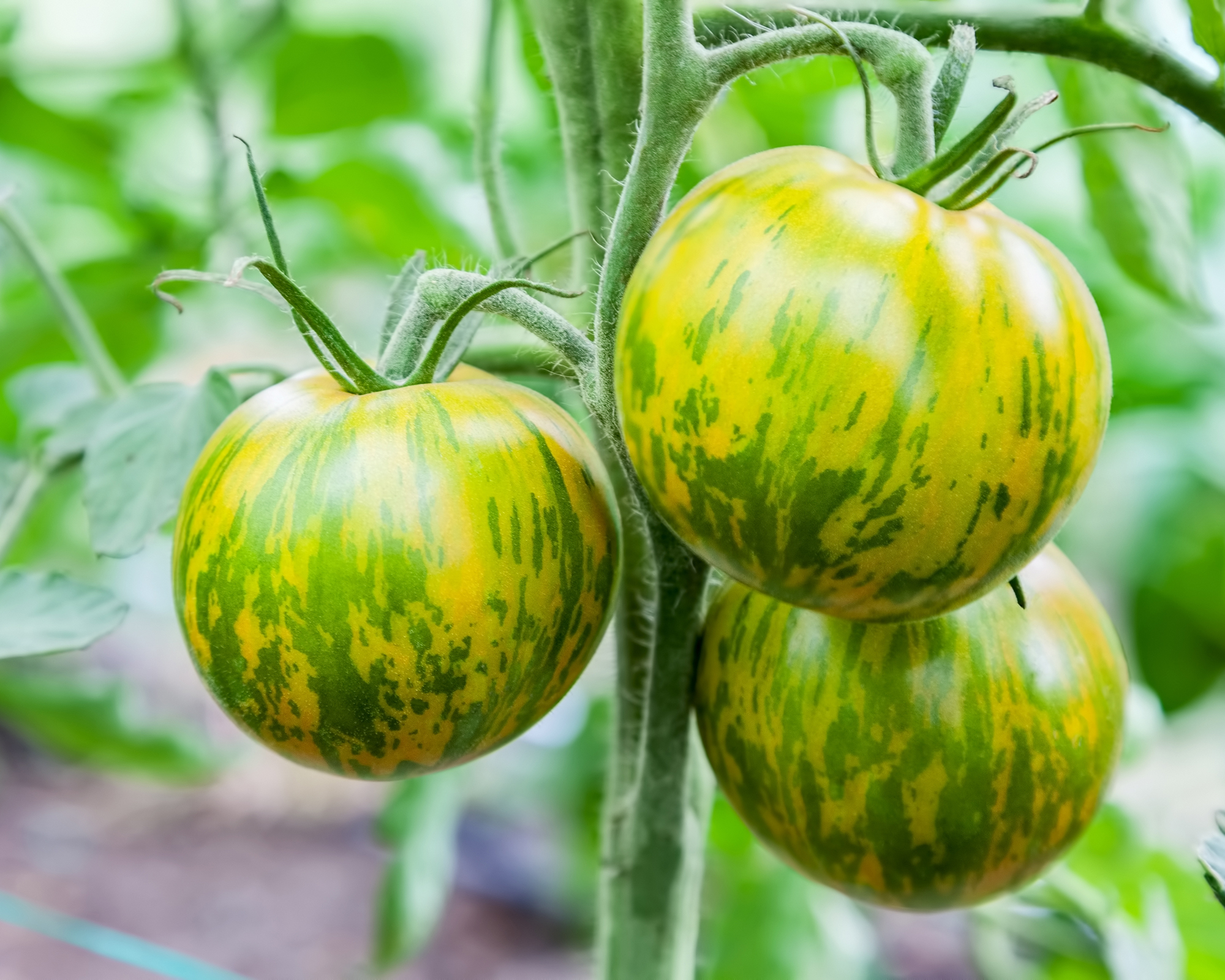
Heirloom tomatoes are varieties that have been passed down, often from generation to generation, for at least 50 years. They are available in a variety of shapes and colors – from green to pink to black – and may be striped, dappled, or even tie-dye in appearance.
Sign up for the Gardening Know How newsletter today and receive a free copy of our e-book "How to Grow Delicious Tomatoes".
As well as being celebrated for their diversity in appearance, heirlooms are often lauded as having superior flavor and texture. They are also rich in lycopene, an antioxidant. Since they are open-pollinated, seeds from heirlooms can be harvested and planted, meaning their progeny will be a carbon copy of the parent. Learning how to save tomato seeds means you will never need to buy seeds again.
On the other hand, heirloom tomatoes are more susceptible to common tomato diseases like fungal and bacterial infections. They also do not always produce as well as hybrids and have a shorter shelf life, often only from 1-7 days.
Popular varieties of heirloom tomatoes include Cherokee Purple, Brandywine, Green Zebra, Yellow Pear, and Black Krim, to name a few.
Hybrid Tomatoes
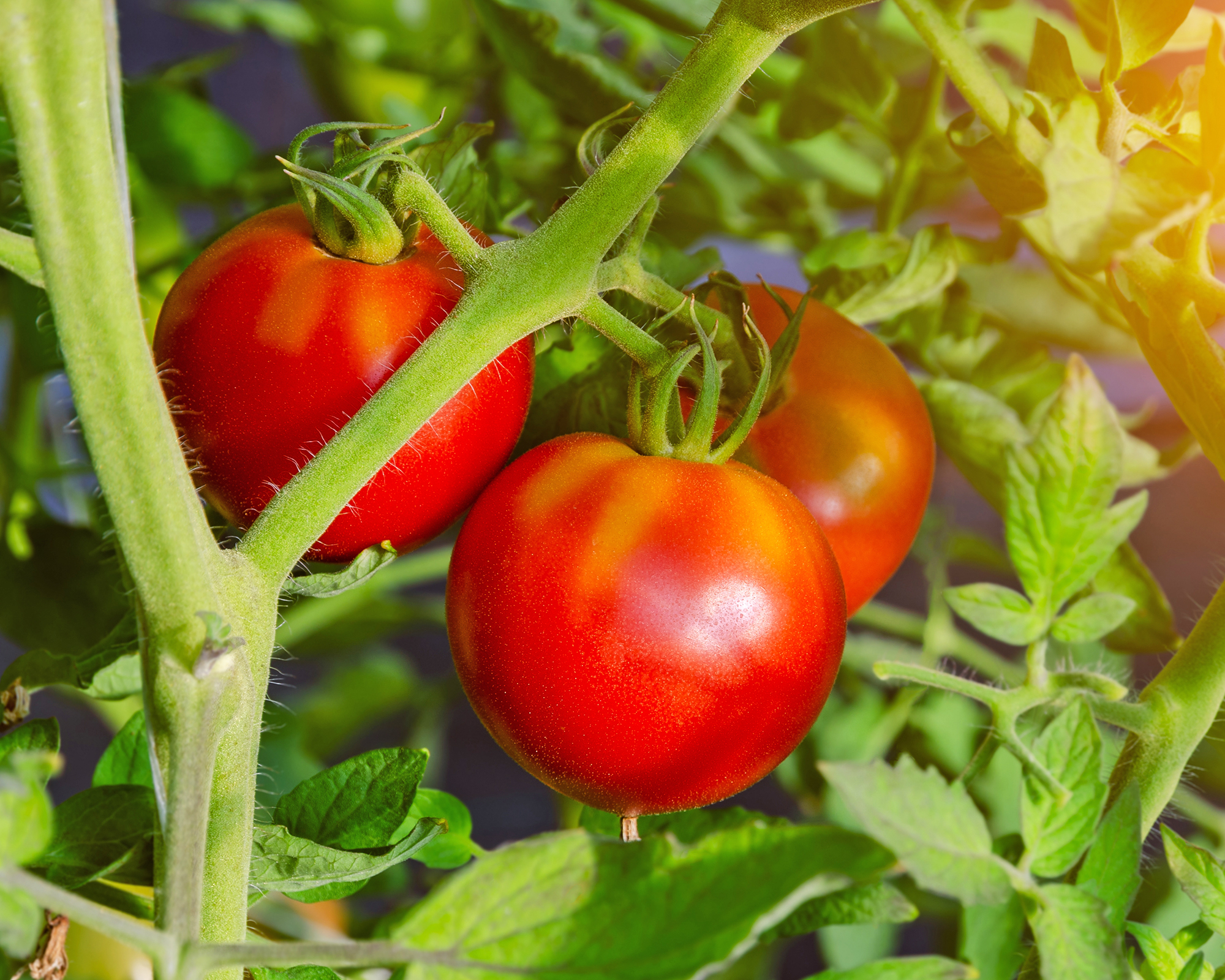
Hybrid tomatoes have been selectively bred to include the best of their parent plants. This means that hybrids are often the most disease-resistant tomatoes, with an increased resistance to pests. They also have a more consistent size and fewer blemishes than heirlooms. Hybrids are bred to have thicker skin and flesh than heirlooms, so they also have a longer shelf life.
The disadvantage of hybrid tomatoes is that their seed cannot be saved. Thus, new seed must be purchased every year, and since much of it is licenced and patented, it becomes more of an expense. Hybrids often also have less pronounced flavor than heirloom fruit and come in fewer colors and shapes.
A few hybrid types of tomato include but are certainly not limited to Big Boy, Early Girl, Indigo Ruby, Lemon Boy, Celebrity, and Better Bush.
Globe Tomatoes
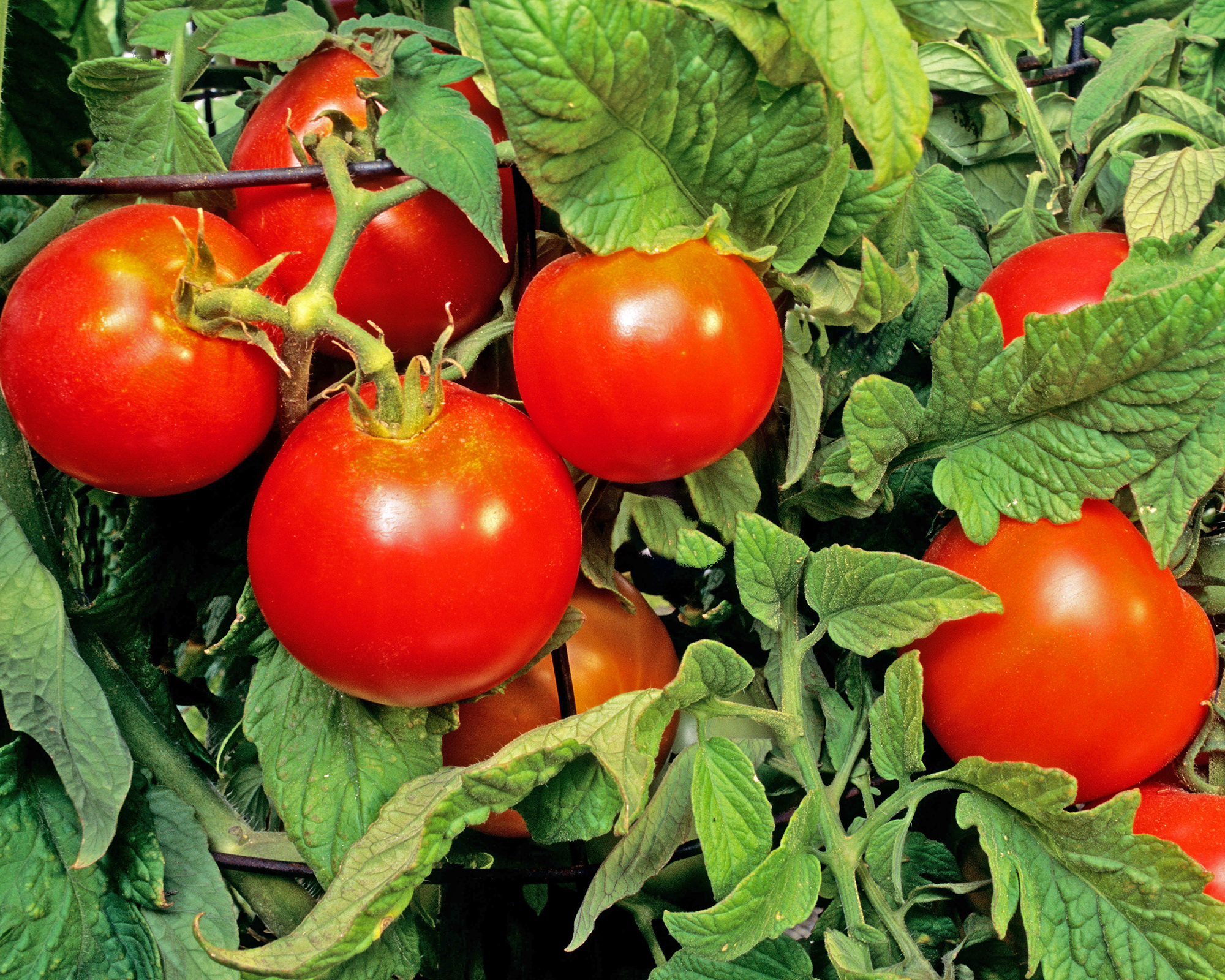
When you purchase tomatoes from the supermarket, you are likely buying globe tomatoes. These are the classic slicing tomatoes, perfect for sandwiches. They have, as the name suggests, a rounded globe shape that is plump and juicy.
Globe tomatoes are hybrid tomatoes bred for their thick skin, mild flavor, and ability to be eaten fresh or cooked.
Examples of globe tomatoes include Better Boy, Early Girl, and Super Bush.
Cherry & Grape Tomatoes
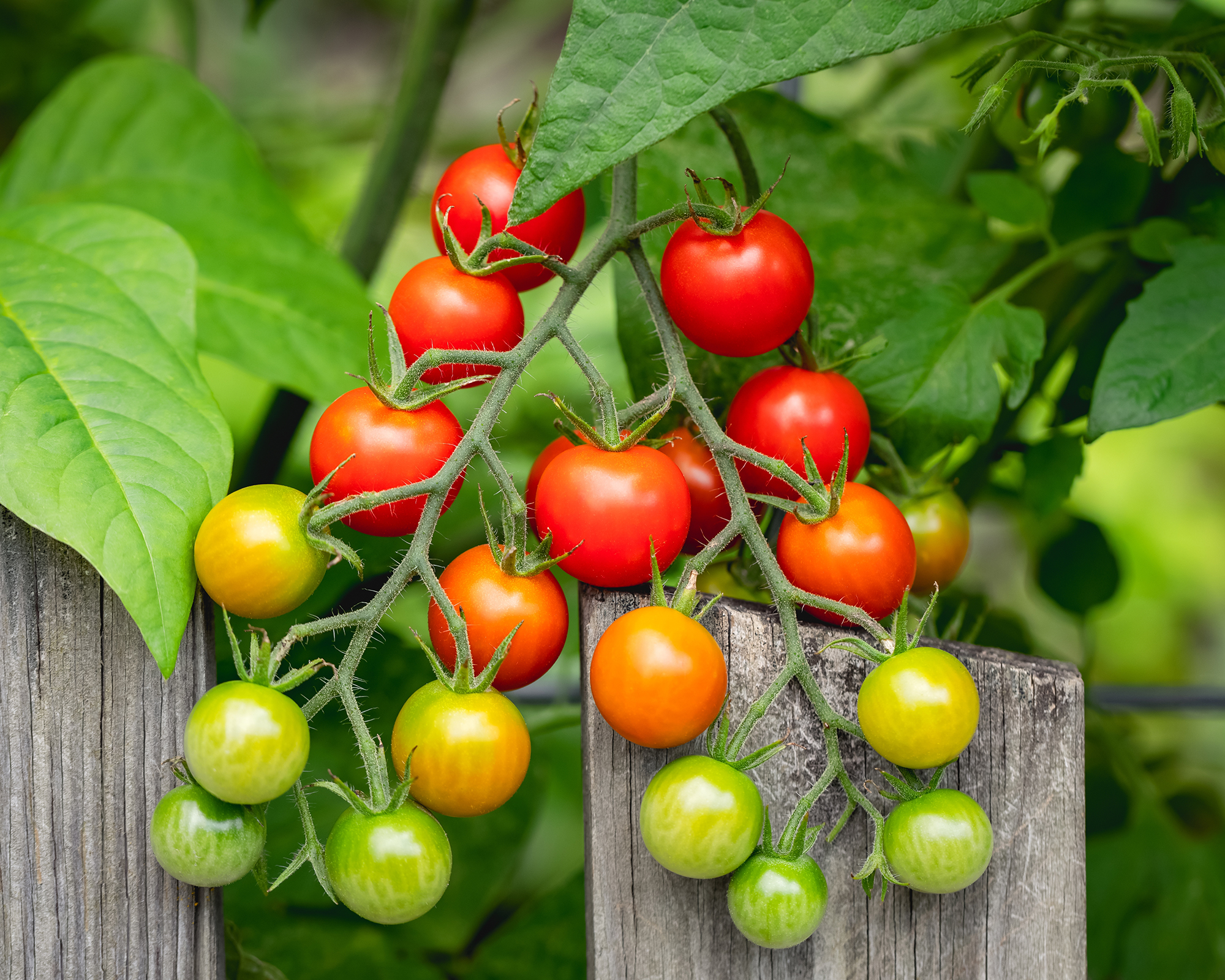
Both grape and cherry tomatoes are small fruit varieties. Cherry tomatoes are generally round, while grape tomatoes are a bit smaller and more oblong. Grape tomatoes are meatier than cherry tomatoes, which are sweeter and juicier. Both are often eaten fresh, although they can be cooked.
Types of cherry tomatoes include Sun Gold, Supersweet 100, Fantastico, and Isis Candy, while options for grape tomatoes include Jelly Beans, Five Star, Candy Bell, San Vicente, Chocolate Sprinkle, and Golden Sweet.
Another type of tomato you might come across when researching cherry tomatoes is the pear tomato. There are several heirloom varieties, all with a distinctive pear shape. They have a sweet, mild flavor and make a wonderful addition to salads or as a garnish. The most notable variety is the Yellow Pear.
Plum Tomatoes
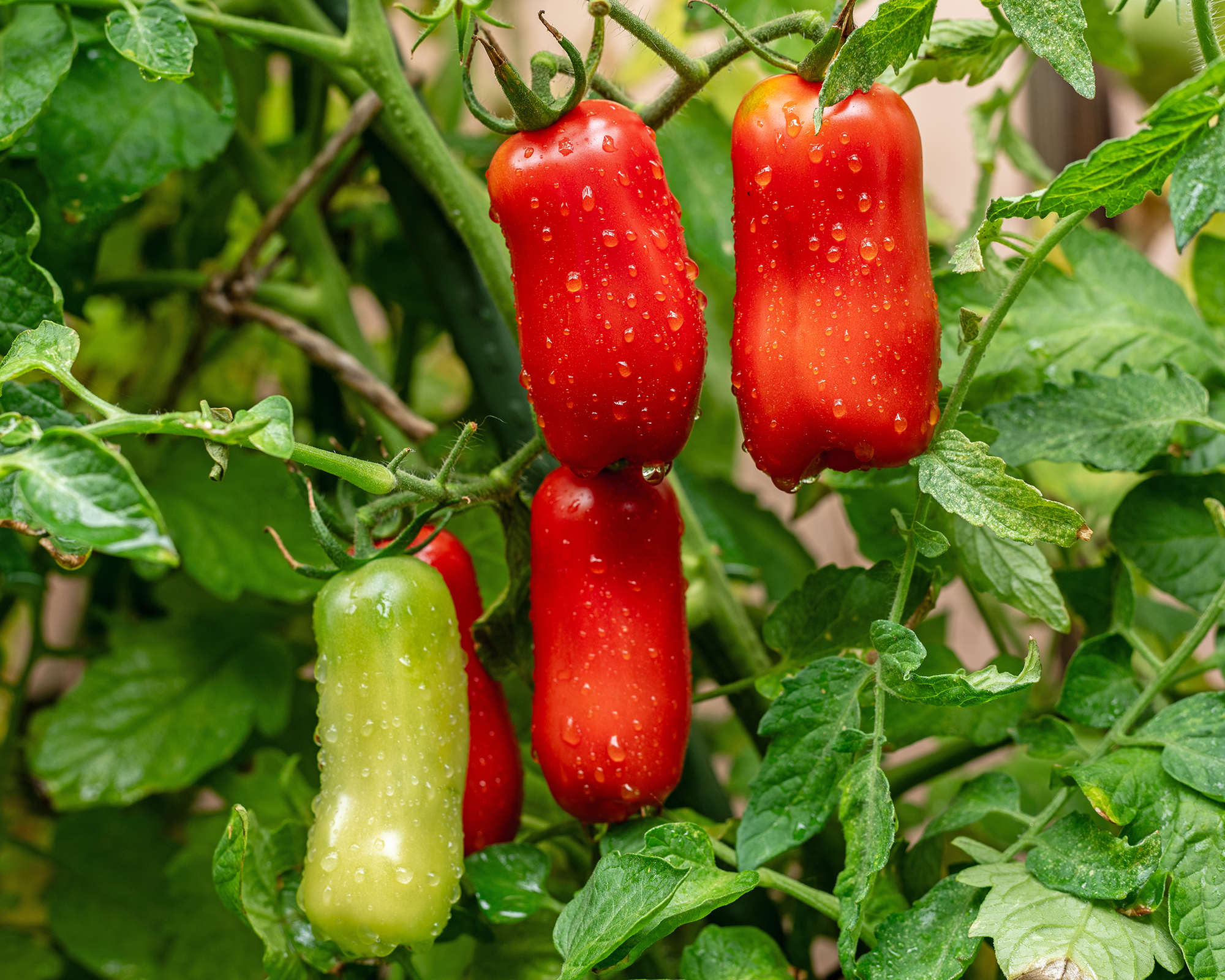
Also known as paste tomatoes, plum tomatoes are perfect for making into sauce and for canning. These oval-shaped tomatoes have a rich, tangy flavor and a meaty texture.
Roma and San Marzano are the most popular varieties of plum tomato. Romas are often found in the produce department and can be used fresh or cooked. They are widely used to make tomato paste.
San Marzano tomatoes are some of the best canned tomatoes that can be found and are famous in Italian cuisine. They are longer and thinner than other plum tomatoes but can be used the same way, fresh or cooked.
Other examples of plum tomatoes are Big Mama and Amish Paste.
Beefsteak Tomatoes
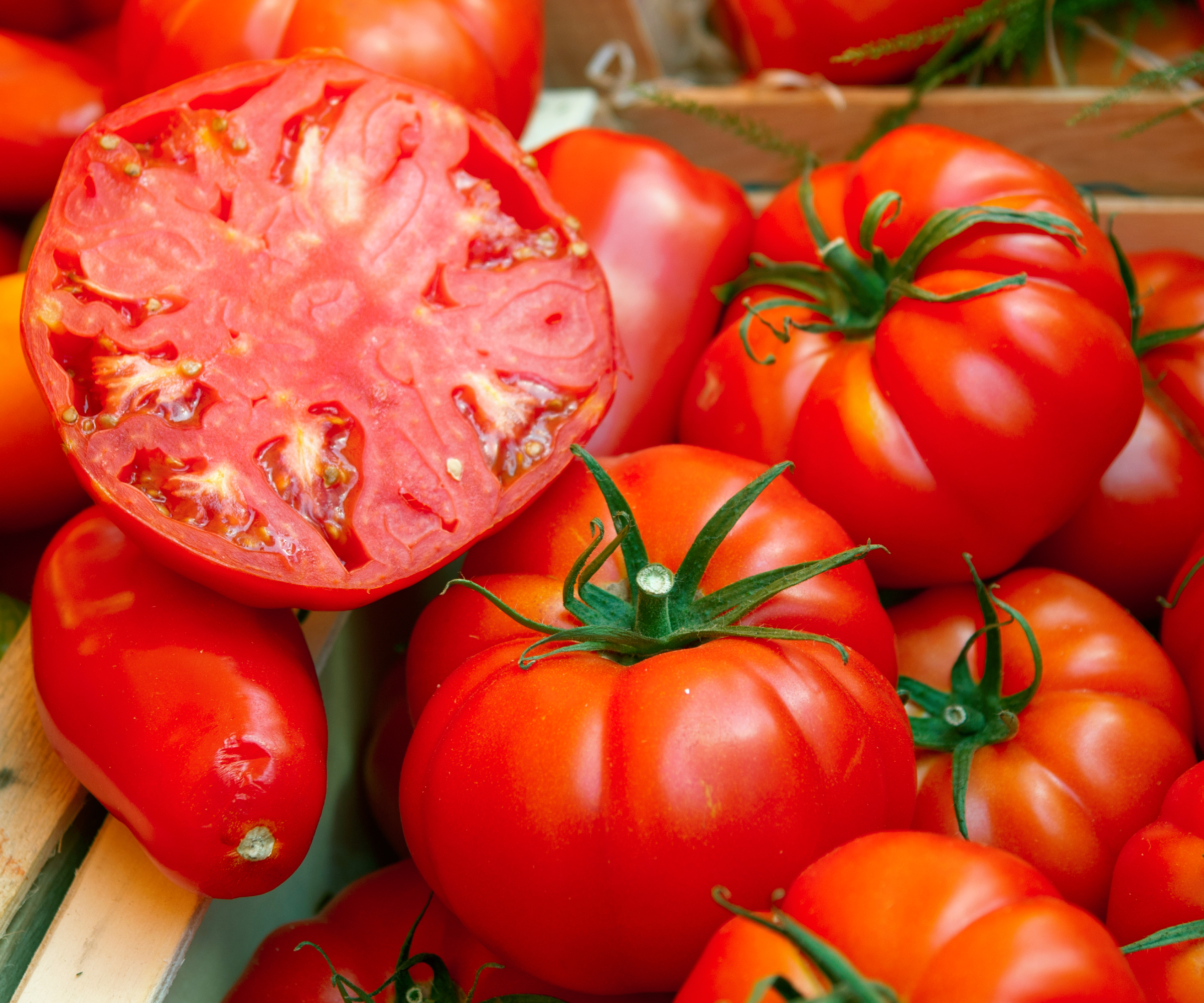
Beefsteak tomatoes are the largest of the tomato varieties. Notable not only for their size but also their flavor, they are the most popular homegrown variety in North America. They have a bright, balanced flavor and are most sought after as a slicing tomato for sandwiches and burgers or made into salsas. They may be either hybrid or heirloom and mature later than many other tomato varieties.
Examples of beefsteak varieties include Big Rainbow, Brandywine, Cherokee Purple, and Mountain Fresh Plus.
Colored Tomatoes
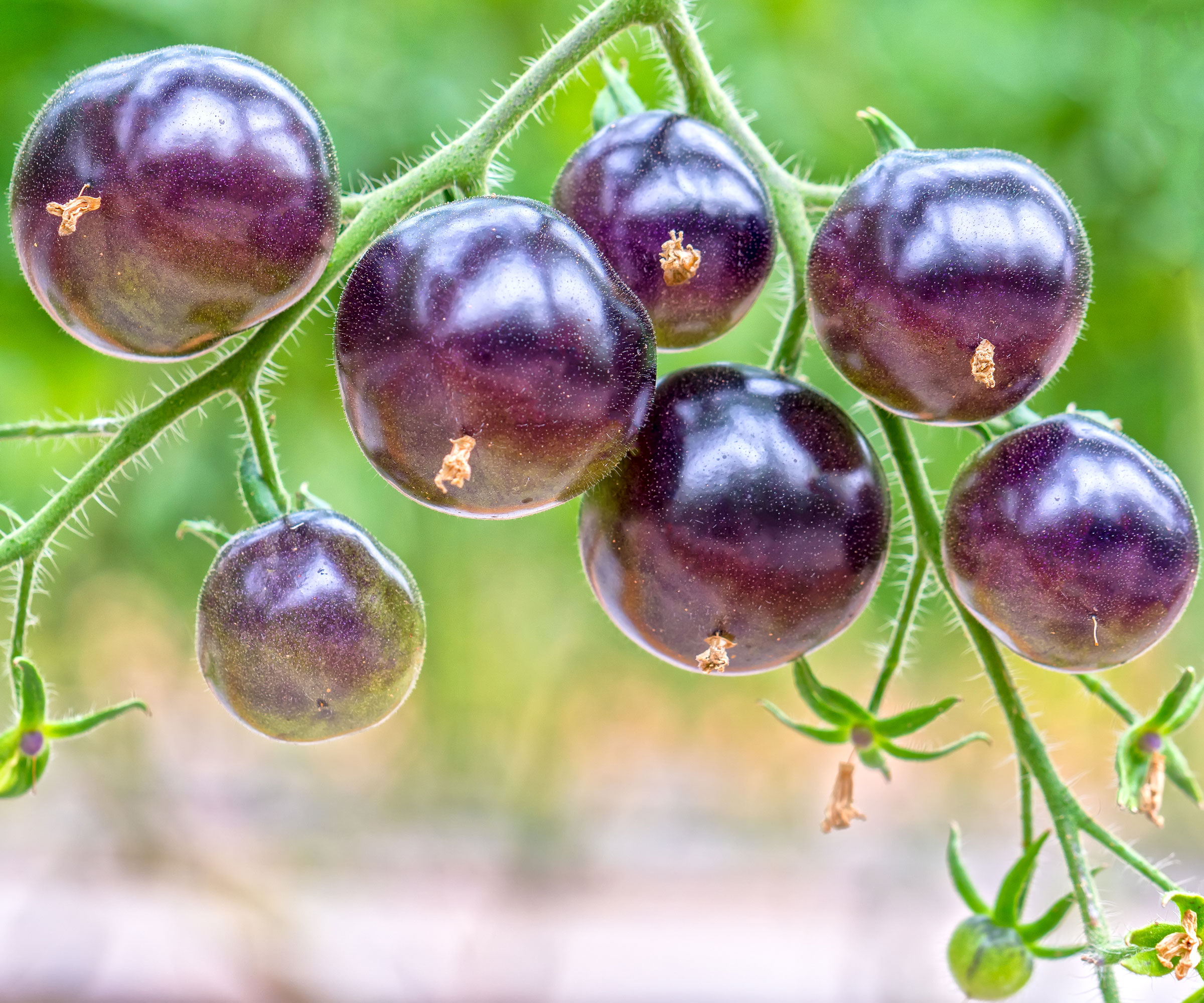
With such a vast number of tomato varieties, it’s no wonder they are available in a rainbow of hues. Traditional red tomatoes are known to be rich in the antioxidant lycopene, but what about other colored tomatoes? Do they have health benefits as well? Yes!
For instance, yellow tomatoes contain more folate and niacin, green tomatoes have high levels of vitamin C, and purple tomatoes are particularly rich in antioxidants. Essentially, if you incorporate a wide variety of tomato colors into your diet, you will increase your intake of a broad range of vitamins and minerals.
The benefits here are lengthy, but briefly, eating tomatoes gives your immune system a boost, helps fight off free radicals thus cancer, helps to maintain a healthy blood pressure and cholesterol level, aids in digestion, and even helps your eyesight.
There are so many healthful and beautiful colored tomato options, but here are a sample of some of them: Thai Pink Egg, Hawaiian Pineapple, Yellow Stuffer, Ghost Cherry, Green Moldovan, and Black Ethiopian.
Dwarf & Patio Tomatoes
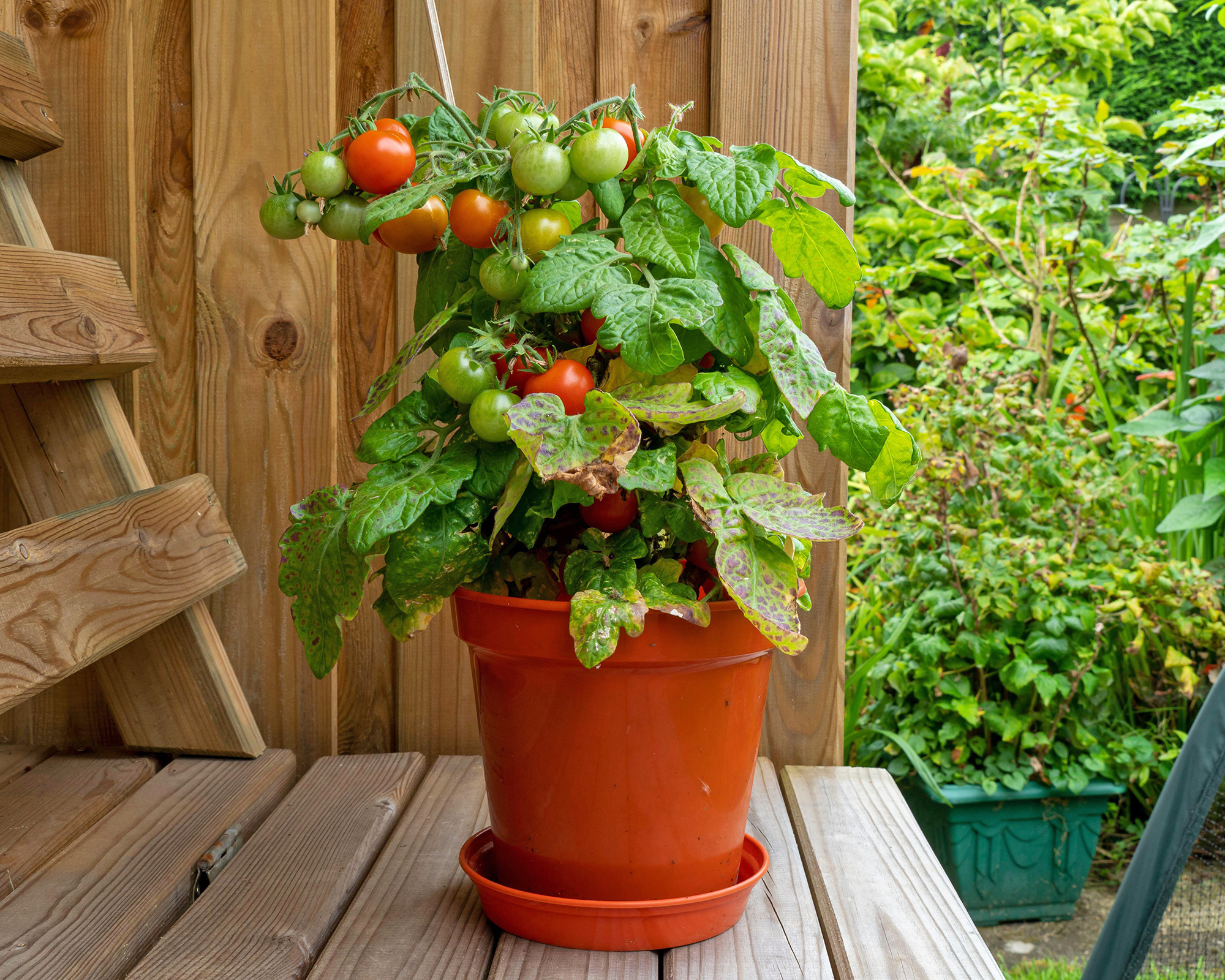
Both dwarf and patio tomato varieties are compact plants that are perfect for small spaces and container gardening. Measuring 2 to 5 feet (60 to 150cm) in height, these small varieties require less support than larger types (although they may still need a cage), produce over a long period of time, and are often disease-resistant.
Good dwarf varieties include Banana Toes and Purple Heart, while patio cultivars include Patio Choice Yellow Bush Cherry and Patio F Hybrid.
Wild Tomatoes
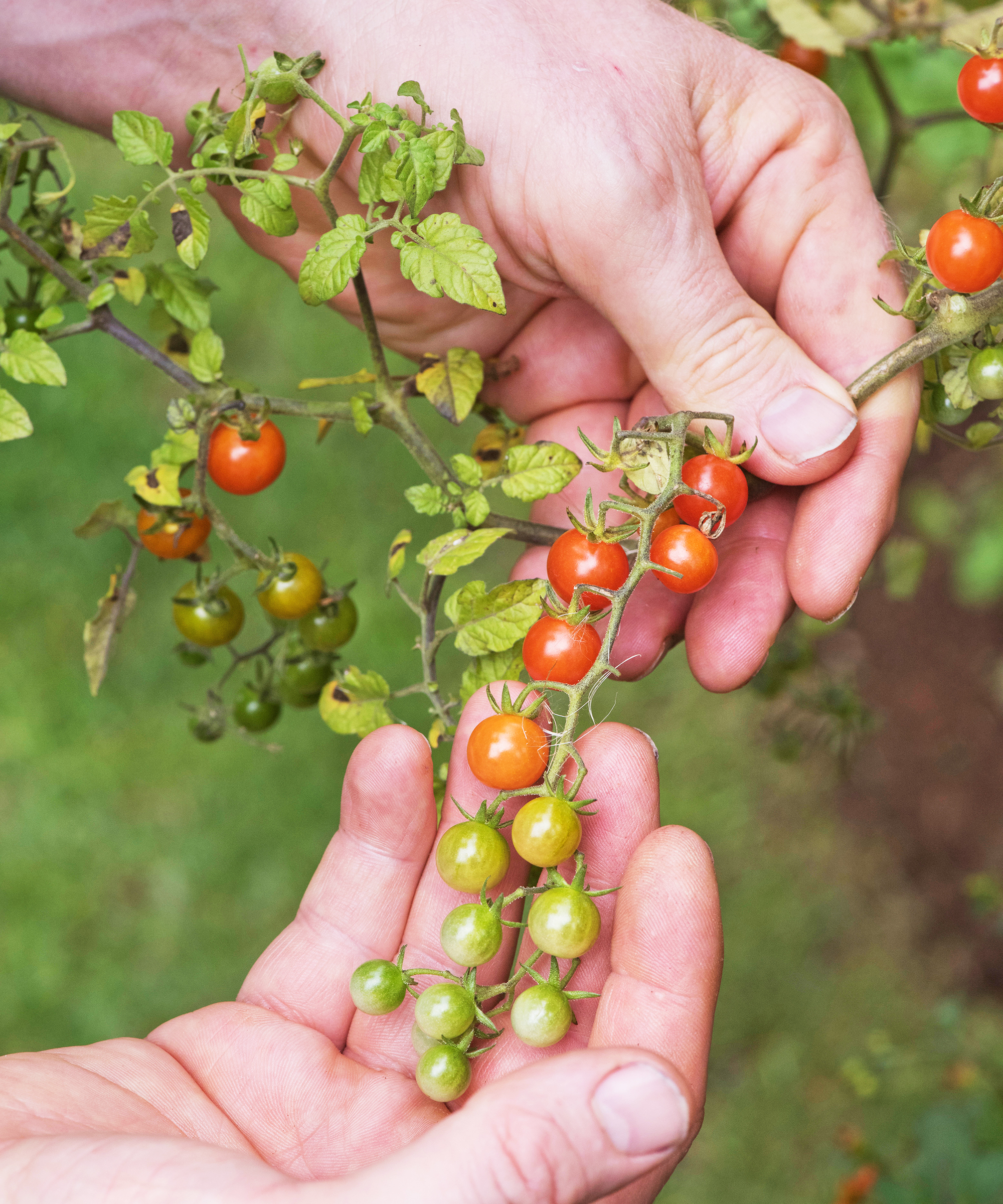
Wild tomatoes are the ancestors of today's cultivated tomato and produce tiny fruit. They can be found in some fairly inhospitable regions and were domesticated in Mexico by 500 BC. They are very similar to currant tomatoes, which are closely related.
They are a low-maintenance, disease-resistant type that produces edible fruit. Wild tomatoes are unfussy about their soil and are eminently adaptable. But don’t run out and get random plants. Look for legitimately sourced cultivars like Currant Tomato or Matt’s Wild Cherry to try in your landscape.
More Tomato Growing Inspiration
- Want to increase tomato yields? Try these 7 expert tricks for a bumper crop.
- Grow tomatoes indoors or on the patio with the EZ Self-Watering Tomato Planter, available in the Shop. Its ingenious design includes a built-in trellis and wheels for the ultimate flexible tomato-growing solution.
- Discover the best herbs to plant with tomatoes. Pair then with these 6 perfect companions for better flavor and bigger harvests.
- Starting tomato seeds indoors? Use our step-by-step guide for healthy seedlings and an extended growing season.
- For more growing inspiration and exclusive offers, sign up for the Gardening Know How newsletter.
This article features products available from third party vendors on the Gardening Know How Shop.

Amy Grant has been gardening for 30 years and writing for 15. A professional chef and caterer, Amy's area of expertise is culinary gardening.
- Melanie GriffithsEditor in Chief
